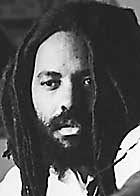![]()
Write us!
[email protected]
The Real Roots of Terrorism
By Mumia Abu-Jamal
“Dictatorships are not uncommon in this world—we should know, we support some of the best money can buy...it does not matter how repressive, how undemocratic, or how dictatorial a government is, it is okay…as long as it is not Communist.”
—Robert Leggett
U.S. Congressman, California, July 24, 1974.
 In the United States media, it is impossible to look or listen to any media, without seeing, hearing, or reading about what seems to be the central issue in American life: terrorism.
In the United States media, it is impossible to look or listen to any media, without seeing, hearing, or reading about what seems to be the central issue in American life: terrorism.
Oddly enough, however, we speak of it without defining what we really mean, and even then, there seems to be a kind of understanding, a deeper meaning that almost doesn’t need to be spoken aloud. “Terrorism” is a kind of media and political shorthand for “Islamic fundamentalism,” or, for some, “terrorist” is but a code for “Arab,” or, as we say in polite media speak, “persons of Middle-Eastern extraction.”
It is impossible for politicians or media to define what is meant, because there is the idea that folks really know.
Several years ago, then Secretary of State George Schultz gave a major speech in New York, the subject of which was terrorism. The following are some of his definitions: “Terrorism is a modern barbarism that we call terrorism”; or, “Terrorism is a form of political violence.” Further, “Terrorism is a threat to Western civilization.” Lastly, Schultz proclaimed, “Terrorism is a menace to Western moral values.”
As the scholar Ahmad Eqbal wrote recently:
“Officials don’t define terrorism because definitions involve a commitment to analysis, comprehension, and adherence to some norms of consistency. That’s the second characteristic of the official approach to terrorism. The third characteristic is that the absence of definition does not prevent officials from being globalistic. They may not define terrorism, but they can call it a menace to good order, a menace to the moral values of Western civilization, a menace to humankind.
Therefore, they can call for it to be stamped out worldwide. Anti-terrorist policies therefore, must be global. In the same speech he gave in New York City, George Schultz also said: “There is no question about our ability to use force where and when it is needed to counter terrorism. There is no geographical limit.” (Terrorism: Theirs & Ours, by Eqbal Ahmad, Seven Stories Pr./Open Media, 2001, New York, page 13)
Any history of 20th century Nicaragua, that covers the acts of the U.S.-supported contras would have to be described as “terrorist,” for they burned a swath through that country of rape, murder and torture of Nicaraguan peasants, trade unionists and activists. Did the U.S. oppose these acts of terror? Hardly. Who can forget Ronald Reagan proudly proclaiming, “I am a contra”?
Professor Ahmad visited the camps that would give birth to the Taliban government in Afghanistan. They were born precisely as a terrorist army by the U.S. CIA, as Eqbal explains:
“In an effort to mobilize the entire Muslim world against the ‘Evil Empire,’ the CIA started supporting the flow of volunteers from all around the world to fight in Afghanistan, to be socialized into the ideology of anti-communism, and to be trained to hit communists wherever they found them. That’s how the militants were recruited and flown in. I have seen planeloads of them arriving from Algeria, Sudan, Saudi Arabia, Egypt, Jordan, even from Palestine, where at that time Israel was supporting Hamas against Al Fatah, Yasir Arafat’s faction of the PLO. These people were brought in, given an ideology, and told that armed struggle is virtuous—and the whole notion of jihad as an international, pan-Islamic terrorist movement was born. The U.S. has spent billions in producing the bin Ladens of our time. In 1986, I visited the camp they hit in Zwahar, Afghanistan. It was a CIA-sponsored camp.” (Ahmad, pp. 46-47)
The roots of anything are not pretty. The majestic oak tree is a sight that lifts one’s spirits, but its tangled and gnarled roots rarely inspire awe. The roots of terrorism in the modern world are Cold War rivalries, and an American determination to provide the hated Soviet Union with a dreaded Vietnam-like experience. The U.S. founded, funded and supported these armies of jihadis and aimed them at the Soviets. They gave Moscow its own Vietnam, but not only that. They nourished the seeds that would become the Taliban government in Afghanistan. And they formed the genesis of what we now call Al-Qaeda. It is truly your tax dollars at work!
The cautionary tale that emerges from terrorist-training camps of Afghanistan, supported by CIA money, is the rule of unintended consequences. For here are the twisted, gnarled, knotted roots of the planes slamming into the Twin Towers in the heart of Manhattan.
Their roots do not sprout from the brown, dry soil of Afghanistan, but from the cool, air-conditioned, plush-carpeted offices of Washington D.C., where cold warriors began the plan to give the Soviets a hot-foot, and burned American asses.
—Copyright 2003, Mumia Abu-Jamal
Write us
[email protected]